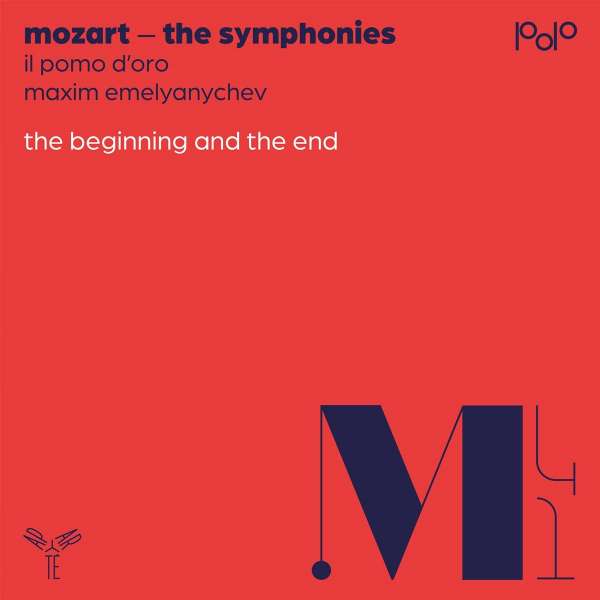Aparté veröffentlicht die erste Folge einer Reihe, die den Symphonien von W.A. Mozart gewidmet ist, mit dem Dirigenten und Pianisten Maxim Emelyanychev und dem Ensemble Il Pomo d’Oro.
Das erste Album mit dem Titel The Beginning and the End enthält Mozarts erste Symphonie in Es-Dur und die letzte, die sogenannte Jupiter-Symphonie in C-Dur sowie, zuzüglich das Klavierkonzert Nr. 23,
Gleich mit der 1. Symphonie erstaunt uns Emelyanychev. Er dirigiert sie derart klangkräftig und forsch, so dezidiert und herrisch, dass man nie annehmen würde, dass Mozart diese Symphonie im Jahr 1764 komponierte, als er gerade einmal acht Jahre alt war.
So fügt sich denn auch das 23. Klavierkonzert von 1786 nahtlos an, das von Maxim Emelyanychev selbst auf dem Hammerklavier gespielt wird.
Hier beeindruckt eine wunderbare Mischung aus poetischer Träumerei (Mittelsatz) und ein spielerischer Rausch mit einem fieberhaften Drängen, das Emelyanychev in die Jupiter-Symphonie hinüberzieht.
Klanglust und Drang zeichnen den ersten Satz aus. Dass er nicht gewillt ist, der Jupiter-Symphonie ihre ganze Bedeutungsschwere zu nehmen, zeigt das bedeutsam dirigierte Andante. Das Menuett ist kraftvoll tänzerisch und das Molto allegro sehr feindgliedrig und schwungvoll.
Was einen die ganze CD über fasziniert, ist der Klang des Orchesters. Il Pomo d’Oro spielt mit einer Begeisterung und einer Intensität, dass man sich in diesem prächtigen Klangbad sehr wohl fühlt, zumal das Spiel bei aller Üppigkeit nie dicht wird, sondern fein raffiniert und transparent bleibt.
Aparté releases the first installment of a series dedicated to the symphonies of W.A. Mozart, featuring conductor and pianist Maxim Emelyanychev and the Il Pomo d’Oro ensemble.
The first album, entitled The Beginning and the End, includes Mozart’s First Symphony in E-flat major and the last, the so-called Jupiter Symphony in C major and, plus the Piano Concerto No. 23,
Right away with the 1st symphony, Emelyanychev amazes us. He conducts it so sonorously and briskly, so decidedly and imperiously, that one would never assume that Mozart composed this symphony in 1764, when he was only eight years old.
So it is that the 23rd Piano Concerto of 1786, played by Maxim Emelyanychev himself on fortepiano, fits in seamlessly.
Here a wonderful mixture of poetic reverie (middle movement) and a playful frenzy with a feverish urge impresses, which Emelyanychev carries over into the Jupiter Symphony.
Sonority and urge characterize the first movement. That, nevertheless, he is not willing to deprive the Jupiter Symphony of all its weight of meaning is shown by the momentously conducted Andante. The Minuet is powerfully dance-like and the Molto allegro very hostile and swinging.
What fascinates one throughout the CD is the sound of the orchestra. Il Pomo d’Oro plays with such enthusiasm and intensity that one feels very much at home in this splendid sound bath, especially since, for all its lushness, the playing never becomes dense, but remains finely refined and transparent.


















